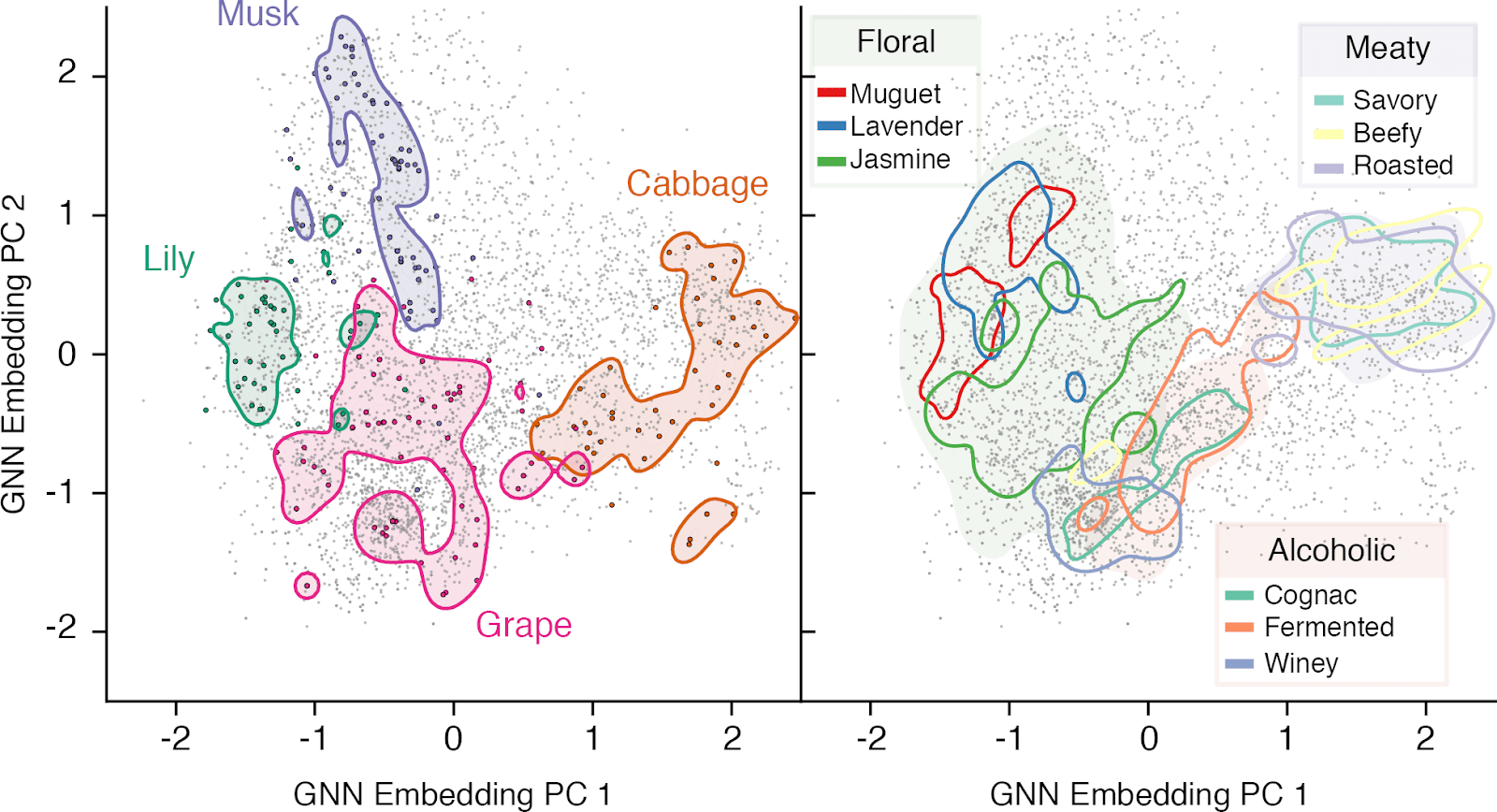© 2000-2023 - Enkey Magazine - All rights reserved
ENKEY SNC - VAT ID IT03202450924 / REA Code CA253701 - Phone. 078162719
In Mountain View they never rest, the last news from the official blog of Google are about a new research of the artificial intelligence which is able to recognise the smells. Let’s see so what have in common Google and the parfumes, in the research published on ArXiv.
The artificial intelligence, Google and the parfumes
Everything start from the molecular structure. Those new algorithms infact are able to evaluate which smell a substance produces from the analysis of its molecular structure.
The work started by creating a database of about 5000 molecules. At about two thirds of them were added specifics about the kind of parfume that they emanated, with specific adjectives like “sweet”, “tropical”, “flowery”. The other molecules instead were used to challenge the artificial intelligence. The AI went so through a workout (infact it is a IA GNN – Graph Neural Network) by letting them test the new molecules and asking to define which smell they have.

It seems that the tests went well, even if the researchers didn’t say any percentage. There is though a problem linked to the fact that usually two different people can define a smell differently (but even a sound, a colour or a taste). For this reason the efficency of these tests must be evaluate consequentially. Let’s do an example with a specific parfume like the sandal, the adjectives that can be used to describe it can be “woody” or “earthy” according to what a single person feels.
It is so a long work where thanks to the system of machine learning it’s possible to teach the artificial intelligence. The problems then are always behind the corner, like for example in the case of the couples of chiral molecules. The chirality, in chemistry, is the phenomenon for which couples of molecules with identical structure, but specular, emanates totally different smells, which can so fool the AI. An example might be the one between cumin and green mint. Another problem can arise when we are going to analyse a complex parfume made by a set of molecules, in this case the AI can have problems to recognise the aggregation of molecules.
The possible applications
This kind of technology can be used in different levels. According to the team of Google Brain Team probable applications could be in the field of the food industry, to test the quality of the products, or in the field of the chemistry or even for the field of the sensory neuroscence.

Even though the many aspects to improve, the authors of the study think that the applications are really a lot. Starting from the possibility to easily work on new smelly molecules, maybe realizing some of them cheaper. This can revolutionize the way of how the syntethic parfumes are produced. Another thing might be instead the one to digitalize the smells. But in the text of the research they talk even about an extremely innovative application. Google infact talks about the possibilty to let smells again the parfumes to who is not able to do it anymore.
To be honest Google isn’t the only one that is working on this unexplored field. In Russia they are using the first discoveries to identify gases’ mixtures potentially dangerous. But even IBM are doing researches focused to realize parfumes made straight by the AI.
This post is also available in:
![]() Italiano
Italiano
